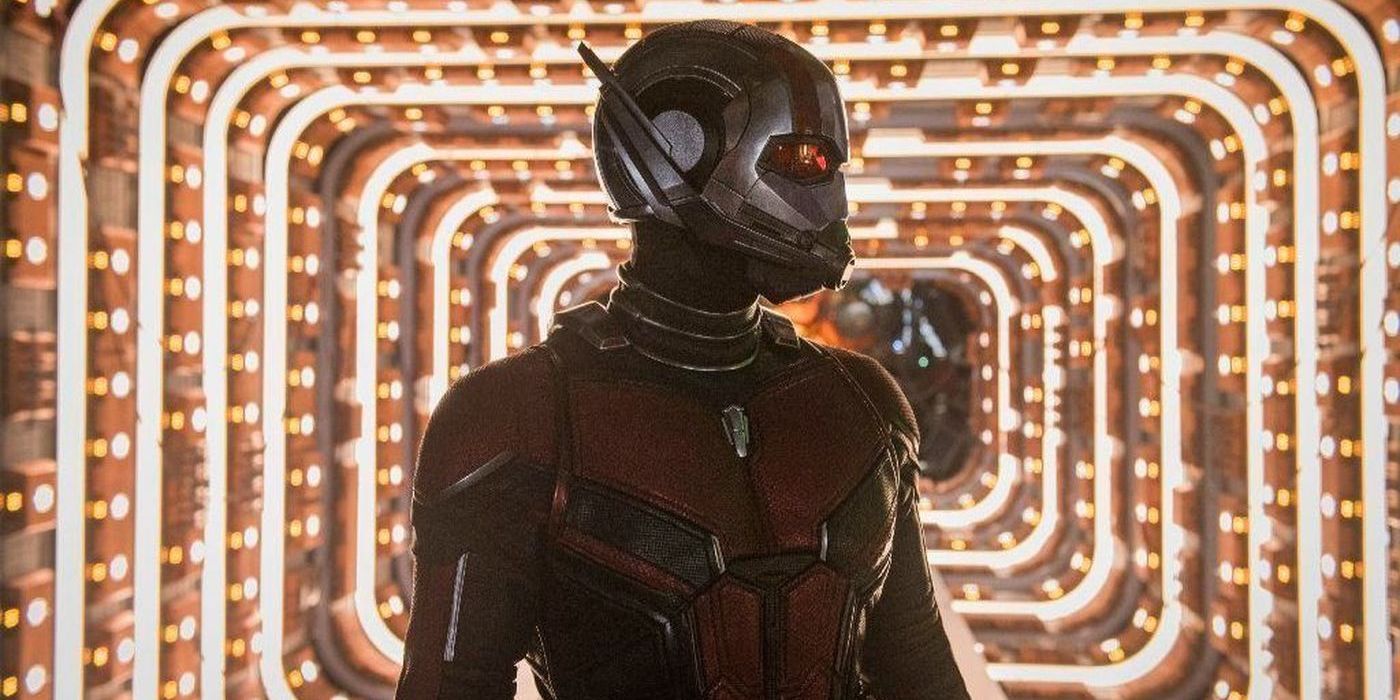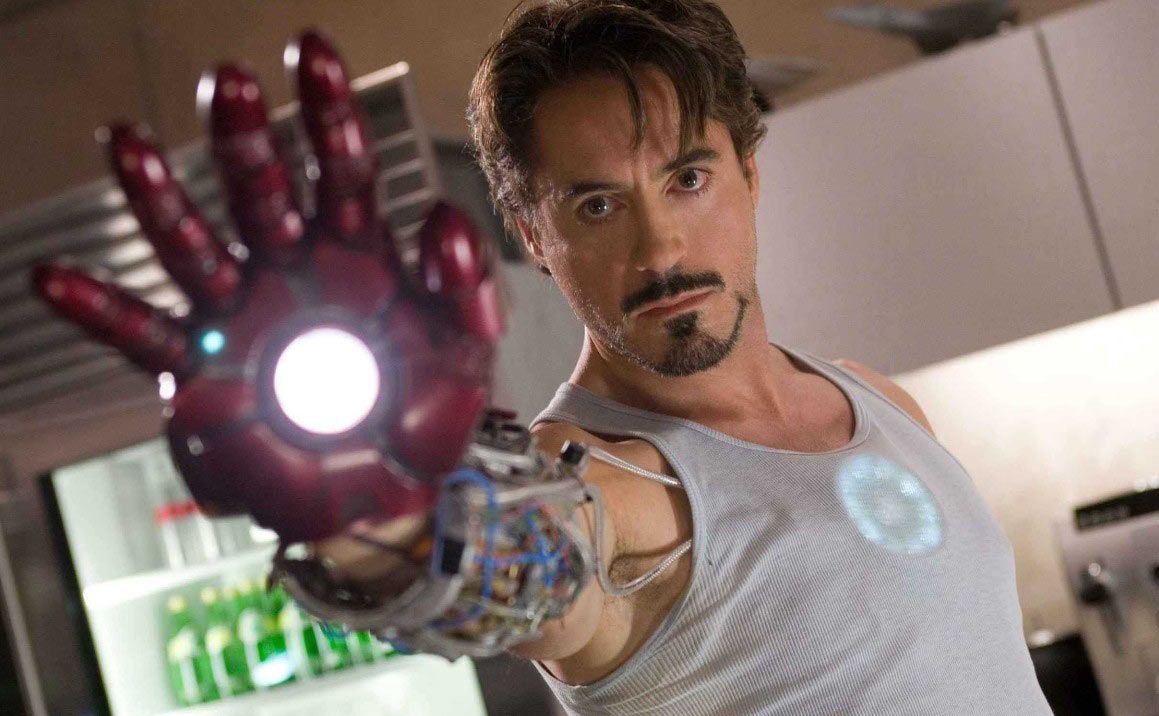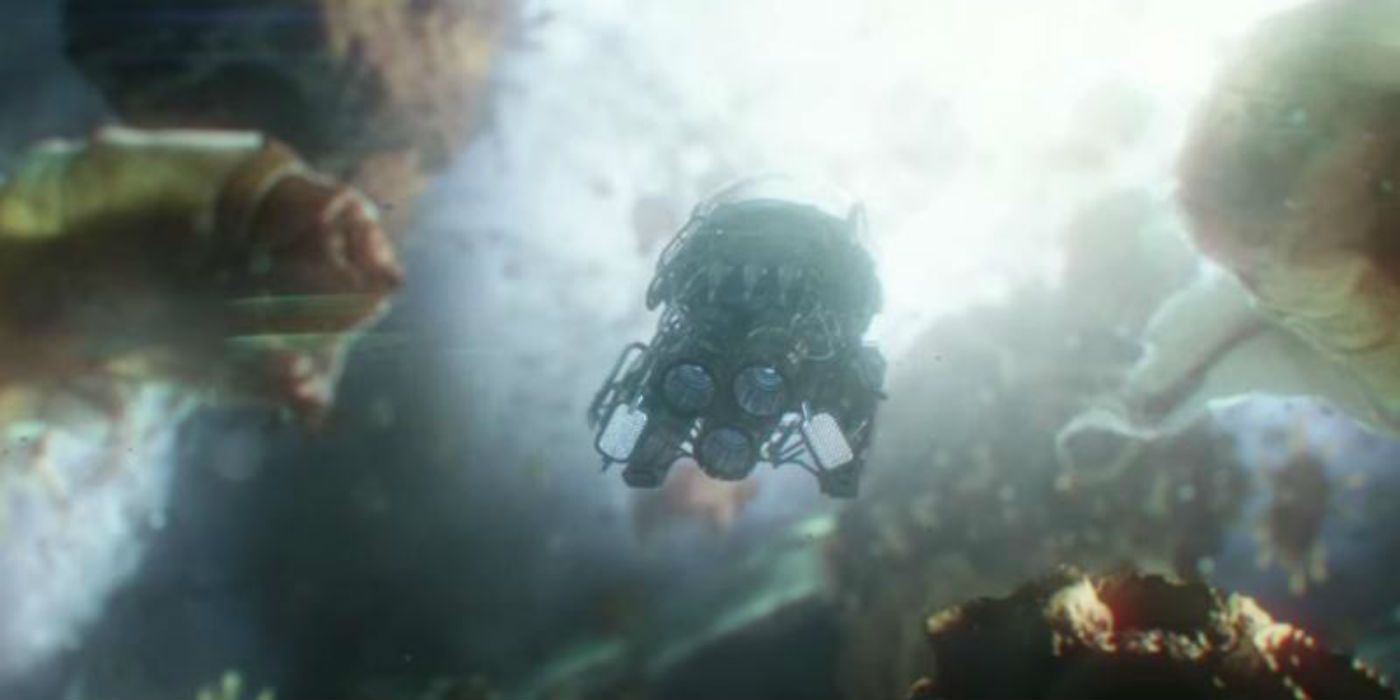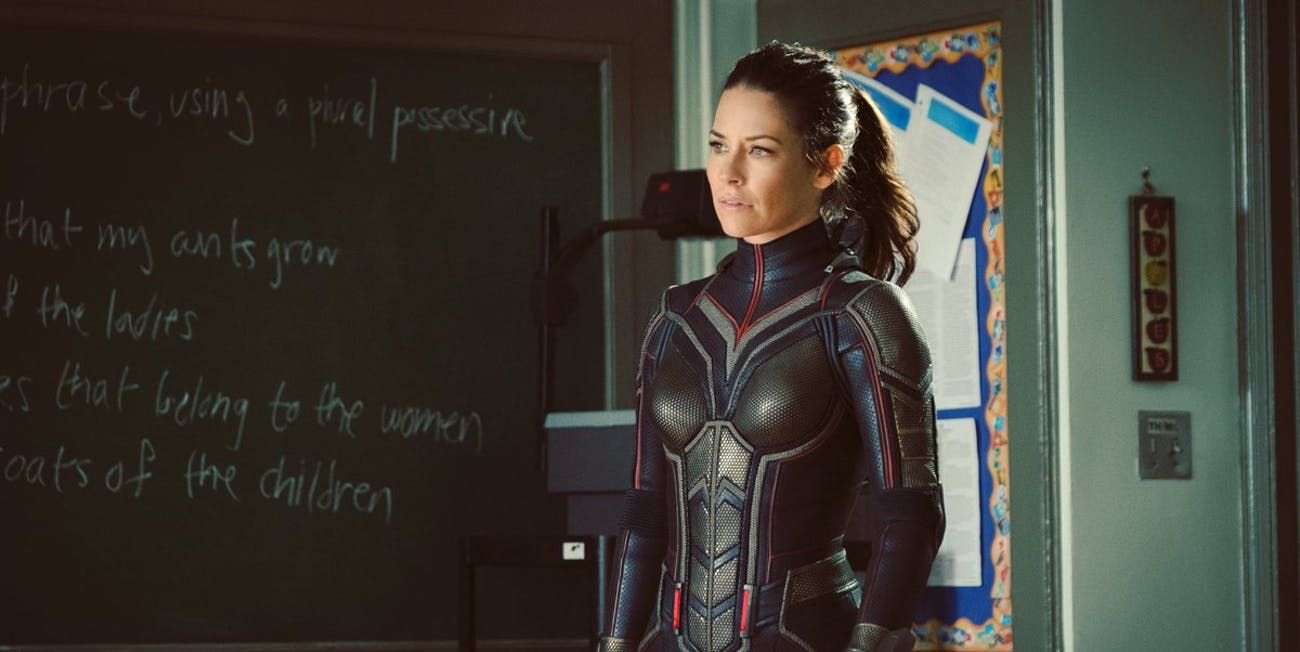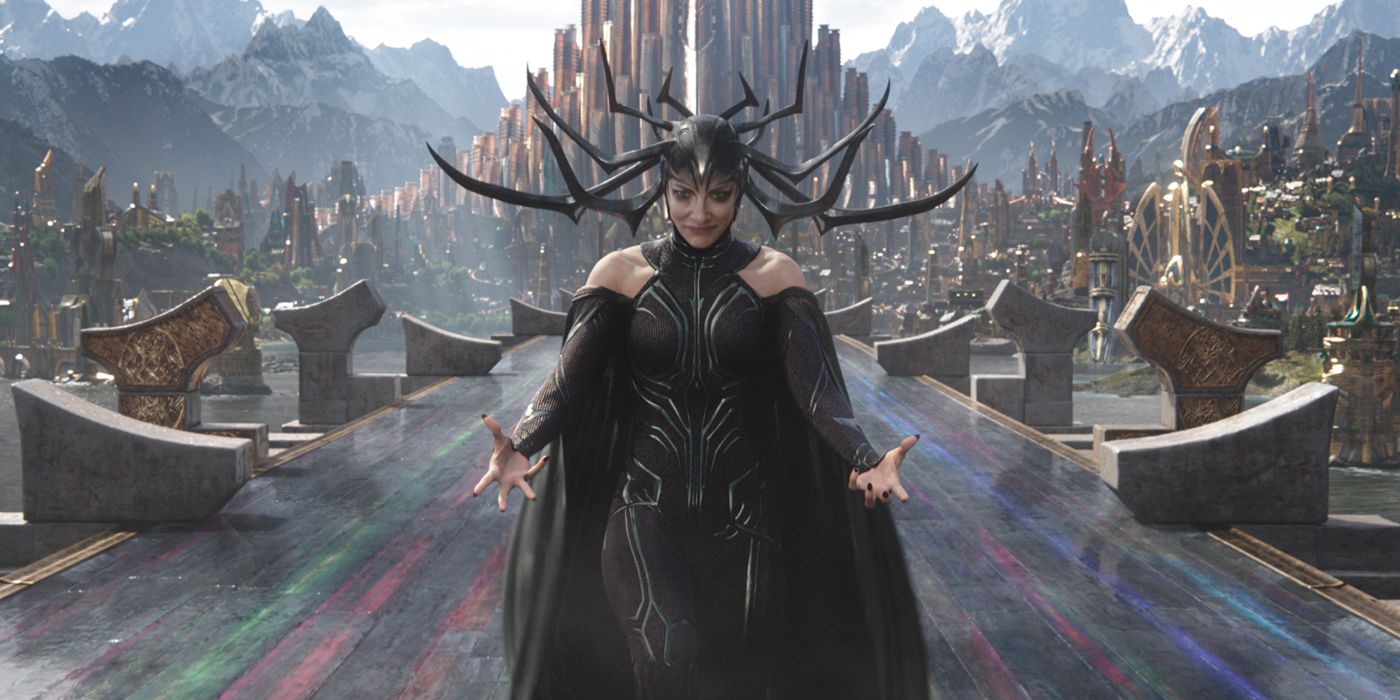The Marvel Cinematic Universe celebrated its 10-year anniversary this year, and crucial to its longevity is the Marvel Studios Visual Development team. At the “10 Years of Art in the Marvel Cinematic Universe” exhibit at the Hero Complex Gallery in Los Angeles, California, Head of Visual Development Ryan Meinerding and Director of Visual Development Andy Park were on-site to discuss Ant-Man and the Wasp and other MCU art questions.
In an interview with CBR, Meinerding and Park traced the development of the MCU from Iron Man to Ant-Man and the Wasp and went into the thought process behind Ant-Man and Wasp’s costumes.
CBR: Ryan, you’ve been with Marvel Studios since the beginning and helped form the “look” for the Marvel Cinematic Universe. Can you describe its evolution from Iron Man to Ant-Man and the Wasp?
Ryan Meinerding: We were starting off trying to look at making Iron Man the most grounded superhero. He was the hero that was going to be able to base his powers in technology, so we could actually make it feel real. So, all the focus on designing the different circuitry around the boots, trying to figure out the RT, trying to make all that stuff feel as rounded as possible was the most important sort of touch down at the beginning, down to how they filmed it…
From a design point of view, it really always was just about the most real we could make the hero. Transitioning into the films that came after it, that sort of stayed as a hallmark. How real could we get it with as much detail as well? Like trying to push the limits of what people would expect for a superhero movie, so trying to find touch downs for each of the heroes that had kind of tech basis but also just felt like something that always existed in the world that they came from.
As each hero came into the universe, then, and added a different flavor with their own different world, I think all of that has sort of transitioned into being very grounded and gradually becoming more and more fantastical. And I think Ant-Man and the Wasp was probably one of those ones where it kind of bridges both worlds now, because you’re dealing with stuff that kind of feels very grounded, but also can do more amazing things.
Andy Park: I think it really started with Ryan working on Iron Man that kind of set the overall tone for the MCU: The look based on science. And then I think Charlie Wen was very instrumental in Thor, getting into the more cosmic realm.
And then as the movies kept going forward eventually, the Ant-Man world, it’s still very science-based, but then having it centered around Hank Pym to give you a different flavor/aspect very different than Stark. So, trying to come up with a look based on science, but something personal to Hank Pym. I think because we have that history of movies, we’re able to kind of like keep that consistency of like always science-based, always being in reality, but adding different essences and flavors.
Meinerding: The fun thing about the Ant-Man property, too, is the Quantum Realm adds, like, an entirely fantastical component that still will feel science-based, but lots of visuals to be pushed in really fun, interesting directions.
Park: Yeah, because it’s based in science, but then it’s not like scientists exactly know quantum physics and visuals. We can base it on that and push it.
Page 2: [valnet-url-page page=2 paginated=0 text='Hank Pym and Tony Stark’s Visual Sensibilities Are Understandably Different']
Could you tell us the thought process of the Ant-Man suit design? Was there a specific design philosophy behind it or was it just to suit the needs of the film?
Park: The first Ant-Man, I designed the costume working with Edgar Wright, the original director, and what was great about that was it’s not a modern suit. We knew from the get-go that it was going to be Hank Pym designed the suit back in the '60s. It was really fun to try to create a look that looks like it’s based in science but is retro. So, that’s why you have exposed piping, even piping that goes from the helmet to the backpack -- things that aren’t very practical or something that you wouldn’t really do in modern days.
But I think to play with a little more clunky kind of design sensibilities was a lot of fun, actually. And Hank Pym’s sensibilities are very different than Stark’s, so a little bit trying to do more of that retro classic car rather than a very modern, sleek car that Stark would do.
And is there anything you can add about the Wasp costume design since they obviously have to complement each other, but she also has to stand alone?
Park: The Wasp design is still [Pym’s] suit, but is modern. He built that one initially for Janet, but at the end of Ant-Man, the end tag, you see that it’s still being made, so it’s a modern suit … The function is different than Ant-Man’s: it can fly, it’s on a woman, it’s sleeker, it’s more agile than the more square Ant-Man. Being able to play off the Ant-Man design, that’s kind of the fun in designing both suits. Trying to make it uniquely Hope’s and also taking into account her personality.
Like in a lot of ways, she’s more capable of being Ant-Man than Scott Lang was in the first film. But because of the story, because of Hank Pym, that’s why she wasn’t able to. So, being able to play off the Ant-Man design, make them complements, you could tell that it was the same designer, but at the same time trying to create the contrast. They’re not just parallel suits, that there’s definitely like a, “Oh wow, she’s got blasters, she’s got wings, she can fly, the colors are different.”
You all invented a color for her, right?
Park: That was during the manufacturing with the costume designer. The question was: How gold do we go? And then I think a lot of people wanted to veer away a little bit from the gold and see how silver we can make it. And so, eventually, they decided that they wanted to do something they called “gilver.” So, something in between gold and silver, and that’s kind of what they landed on.
Page 3: [valnet-url-page page=3 paginated=0 text='Naturally, Marvel Comics Are the Ultimate Inspiration']
How bound are you by the comic book source material when it comes to design? Have there been times where there was some pushback for your ideas because it was a little too far beyond the comic book source material?
Meinerding: For me, I look at it as the source material is a great inspiration. We’re always trying to find ways of transitioning something from the source material into something in the films. If we can do that seamlessly, then the directors and producers are excited about it.
But, to me, it’s usually trying to find that version from the comics that works with some story point that’s going to come up in the movie that’s going to work for the story world of creating. Within the reality that we’re trying to create, what piece of source material is going to be perfect for that. For me, it’s never that we’re really trying to diverge too far, it’s really just looking at all the parameters of the project. How can we be true to the character, but be true to the story.
That must be a difficult process!
Meinerding: That’s the fun part. If we ever do things that’s too far -- I think when we walk into meetings, we kind of know, like, “That one’s probably not going to get picked, but we thought it was cool to explore.” It’s the ones where we walk in and, like, “Oh, that one’s from the source material and it’s like this cool new take, and it’s like we’ve twisted it in such a way that it works perfectly." I think those are the ones we’re really excited to show
Park: I think the story is the first thing. That’s what we base everything on. And I think it really depends on the director. Some directors lean more into the comic book feel, others are a little more grounded.
For example, designing Hela from Thor: Ragnarok for Taika, I’d do designs that, in my mind, were a little more believable, especially with those antlers. But then Taika was one where he, like, kept on bringing the comic book as reference, “I want this! I want this!” So, I definitely appreciated that because not every director wants exactly the comic book.
It depends, but regardless, we’re always trying to bring a reality, but being respectful because we’re all fans at the end of the day. We’re fans of comic books, we grew up with comic books, so we want it to look like the comic book as much as possible.

